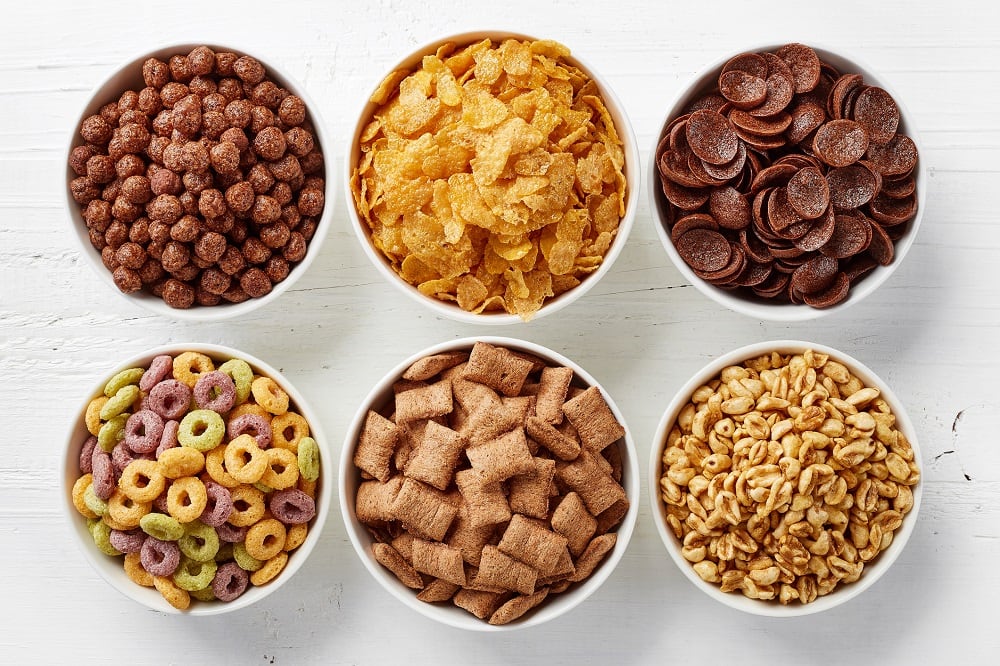Analysis of 371 different breakfast cereals in Mexico found revealed that the nutritional profile of 69% of the products were classified as “less healthy”. The findings are published in the journal Nutrients.
In addition, scientists from Mexico’s National Institute of Public Health, Virginia Tech (USA), and the London School of Hygiene & Tropical Medicine (UK) report that labeling of claims and Guideline Daily Amount (GDA) on the front of pack was more common for these “less healthy” products.
“This study has shown that there is a lack of consistency between the labeling on the front of the pack and the nutritional quality of breakfast cereals,” they wrote. “Mexico has taken the first steps by implementing a mandatory FOPL [front of package labeling] system for all processed foods. Nevertheless, the presence and use of a broader range of claims presents a new challenge.
“The current government should monitor the use of claims, set sodium targets on breakfast cereals and improve the current FOPL in addition to encouraging the food industry to follow the Mexican Regulations on labeling.”
Front of package labeling
Mandatory front of pack labeling was introduced in Mexico in 2014, but prior to this a voluntary scheme existed called the GDA (Guideline Daily Amount).
“However, evidence has found that this type of FOPL system is not well understood by Mexican consumers,” wrote the authors of the new study. “Such labelling had reference values higher than the WHO recommendations on certain nutrients, including sugar and sodium.
“Given the significant contribution of breakfast cereals to the Mexican diet as well as the lack of strong policies for claims and food promotion, it is important to assess the quality of breakfast cereals and to identify current practices of package labelling.”
New analysis

The researchers purchased 371 breakfast cereals from the nine main food retail chains in Mexico and assessed using the United Kingdom Nutrient Profiling Model (UKNPM). In addition, any claims made on the products were classified using the International Network for Food and Obesity/non-communicable Diseases Research, Monitoring and Action Support (INFORMAS) taxonomy. The GDA was also defined according to Mexican regulations.
The data indicated that 69% of the breakfast cereals assessed were classified as “less healthy”, with significantly higher contents of energy, sugar, and sodium. The researchers also found that claims and GDAs were displayed more frequently on the “less healthy” products.
“Our study revealed that there is a high content of added sodium in the Mexican national sample of breakfast cereals available in supermarkets (median 450 mg/100 g) when using the cut-off points of the UK traffic light labelling system,” they wrote. “The United Kingdom’s sodium target for 2017 is 235 mg/100 g.
“Current salt reduction strategies in Mexico are focused on reducing sodium in canned products and meats. Nevertheless, they have not considered the significant amount of sodium in breakfast cereals. Therefore, our results might urge the government to set sodium targets specifically for breakfast cereals.”
“These data might suggest the need for stronger standards in the FOPL to enable consumers to identify healthy food products, using adequate cut-off points for nutrients of interest (energy, sugar and sodium).
“Since advertising techniques on the front of the package of food products have heavily increased, this study can set the example for other Latin-American countries to assess their food products,” added the researchers.
Source: Nutrients
2017, 9(8), 884; doi:10.3390/nu9080884
“Characterization of Breakfast Cereals Available in the Mexican Market: Sodium and Sugar Content”
Authors: C. Nieto et al.

